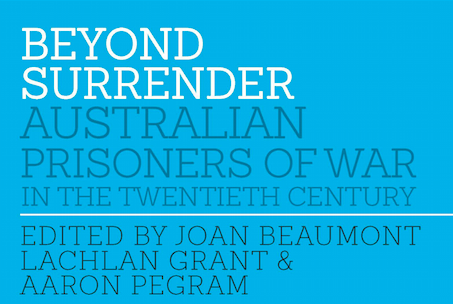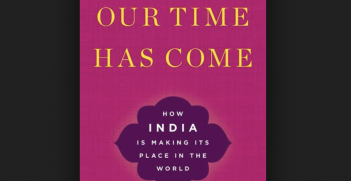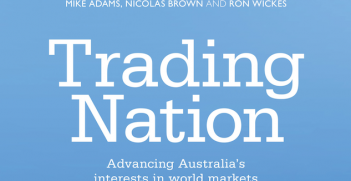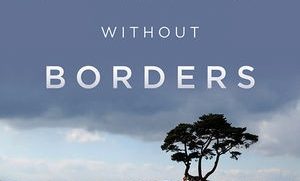Beyond Surrender

A striking feature of the development of the Anzac legend over the past hundred years has been the incorporation of the experience of Australian prisoners of war. Their story was barely mentioned in the twelve-volume official history of the 1914-18 war. The experience of those captured by the Japanese in the Pacific War made more of an impact, but was not pronounced until the 1980s and 1990s. Weary Dunlop became a sort of secular saint, whose statue was erected outside both the Australian War Memorial in Canberra and the Shrine of Remembrance in Melbourne. Dunlop was only one of 44 doctors on the Thai-Burma Railway and 106 captured by the Japanese, but he achieved an extraordinarily powerful place in the Australian imagination, both as an individual and as a symbolic figure. Partly because of the attention given to Dunlop, Hellfire Pass on the Thai-Burma railway has now become almost as sacred a site for the Anzac legend as Gallipoli or Villers-Bretonneux.
The book Beyond Surrender emerges from a 2013 conference sponsored by the Department of Veterans’ Affairs and co-hosted by the Australian National University and the Australian War Memorial. The purpose of the conference and now the book, is to extend our understanding of the extent and diversity of the Australian prisoner of war experience. The contributors include some senior historians, including professors Joan Beaumont, Jeffrey Grey, Melanie Oppenheimer and Christina Twomey; several historians at the Australian War Memorial; and some fairly recent authors of post-graduate theses in the field. Each paper makes a valuable contribution and the introduction by the three co-editors is a valuable encapsulation of the historiography.
Even those who regard themselves as well informed on Australian military history, including the experience of prisoners of war, will find unexpected dimensions of that experience in this book. The attention that has been given to the prisoners of the Japanese has not always made it clear, for example, that those prisoners were often in more danger when being transported by sea, mostly to Japan, than in their original place of incarceration. As the editors note, ‘More Allied prisoners of war died when the “hellships” in which they were transported by the Japanese were sunk by Allied submarines than on the Thai-Burma railway’.
The Australian prisoner of war story is expanded in these papers in several different dimensions beyond the familiar tropes. There were Australian prisoners, for example, in both Germany and the Ottoman Empire during the 1914-18 war. Here Aaron Pegram writes on the Australians captured in Germany, Jennifer Lawless on those captured at Gallipoli and later in that region, and Kate Ariotti (a recent winner of the CEW Bean prize for a thesis on Australian military history) on the experience of the families at home of those captured by the Turks. Also paying attention to the home front, Melanie Oppenheimer, Australia’s most notable historian of the Red Cross and other volunteer organisations, writes of the role of the Red Cross in both world wars.
Seven papers refer to different aspects of captivity suffered by Australians in the 1939-45 war. Karl James discusses those captured during the siege of Tobruk; Peter Monteath, the author of a book on Australian prisoners of war in Germany, explodes “the Colditz myth”, the impression propagated by such movies as The Great Escape, The Wooden Horse and Colditz. Seumas Spark writes of the Australian prisoners in Italy, while Lucy Robertson, Joan Beaumont and Lachlan Grant contribute several fresh aspects to the broadly familiar ground of the Australian prisoners of the Japanese.
The book concludes with an account by Jeffrey Grey on prisoners during the Korean War, together with the recollections of two Australian survivors of that experience. Finally, a study by Christina Twomey of the campaign for post-war compensation of Australian prisoners of the Japanese.
Together these papers achieve the goal of expanding our understanding of the Australian prisoner of war experience. While the book’s principal audience will probably be academic historians, those with a general interest in Australian military history will find much of interest, and not a little that surprises.
Two final impressions are worth recording. First, the future of Australian military history appears to be in good hands, with scholars of all ages and both genders. It is pleasing to see that Australian military history, broadly conceived to include its social dimensions, is being undertaken by universities other than the Canberra-based institutions that organized the conference. However there is certainly room for further expansion.
Secondly, it is gratifying to see that Melbourne University Press is publishing solidly academic books such as this as well as the high-profile and often controversial political biographies that have drawn most attention to that imprint in recent years.
Eds. Joan Beaumont, Lachlan Grant and Aaron Pegram, Beyond Surrender, Melbourne University Press, 2015
Peter Edwards is an Adjunct Professor at both the Australian National University in Canberra and Deakin University in Victoria. This article can be republished with attribution under a Creative Commons Licence.





